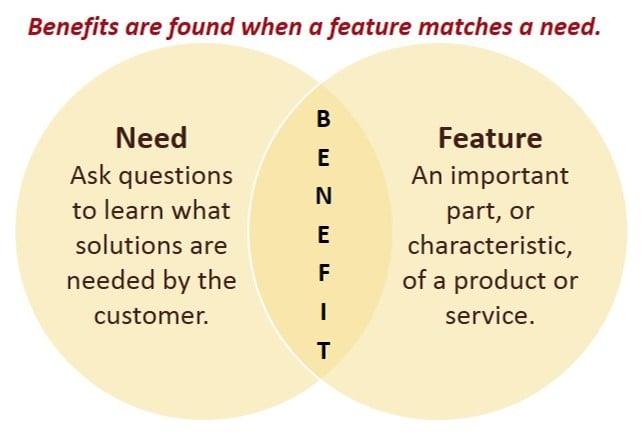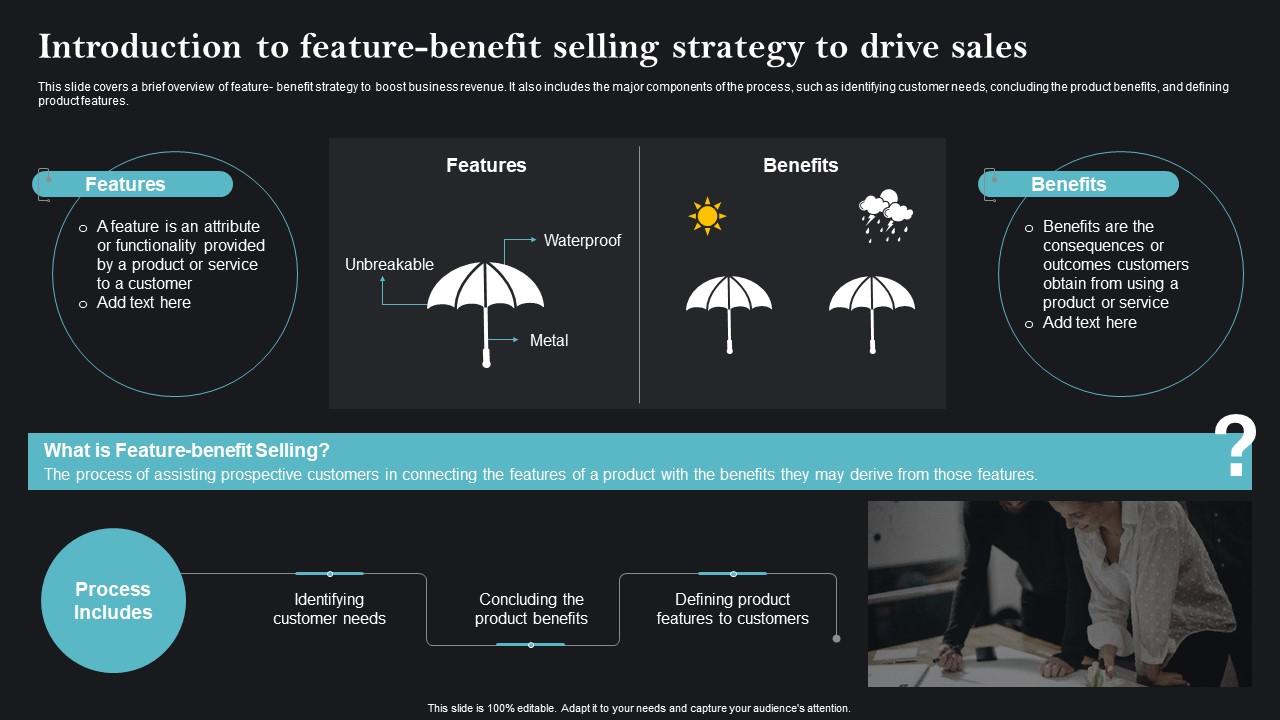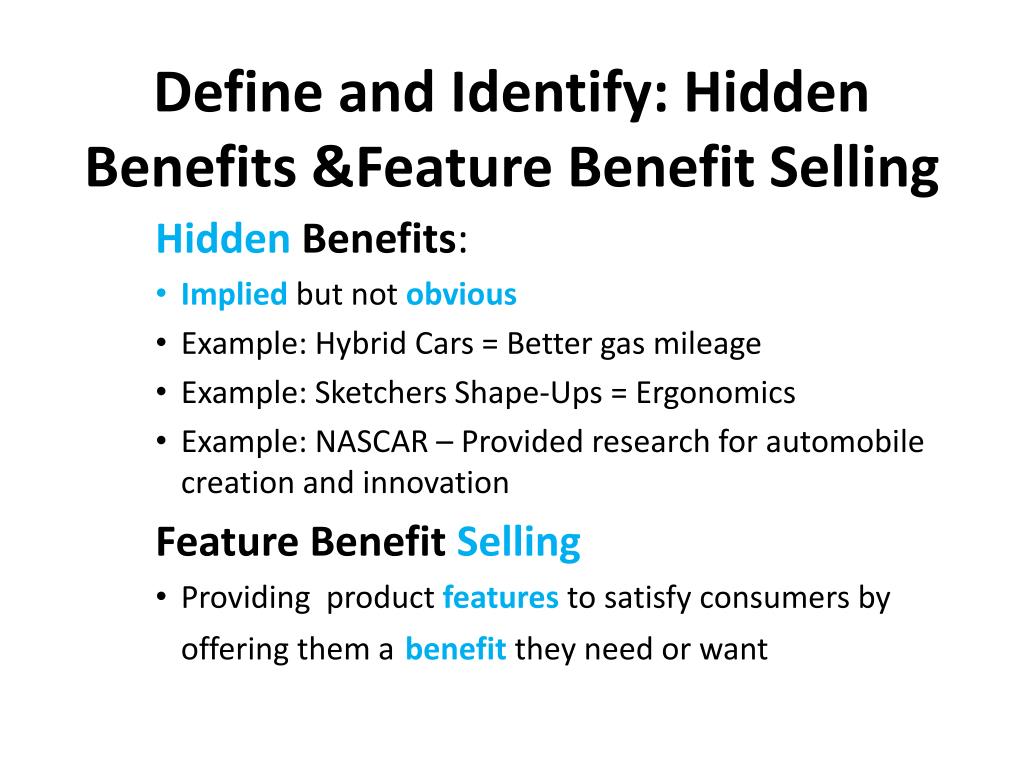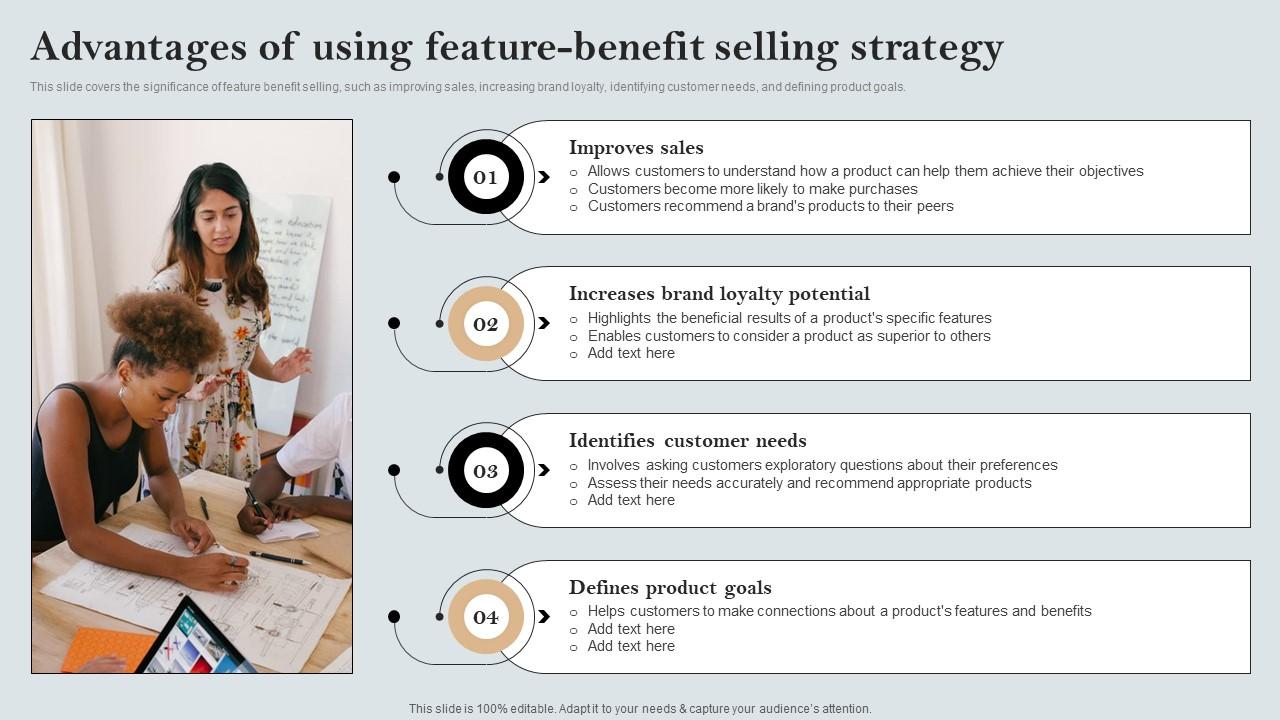Unlocking the Power of "Why": A Guide to Convincing Customers with Feature-Benefit Selling

As an interior design expert and architect, I’ve spent years crafting spaces that not only look beautiful but also function seamlessly. The key to success? Understanding the "why" behind every design choice. This same principle applies to selling your product or service. Instead of simply listing features, focus on the benefits they deliver to your ideal customer.
Understanding Your Ideal Customer

Before we dive into features and benefits, let’s define your ideal customer. Who are they? What are their needs, desires, and pain points? The more specific you are, the better you can tailor your message to resonate with them.
The Power of "Why"
Features tell what your product or service is, but benefits tell why it matters. Benefits answer the question: "What’s in it for me?" They connect with the customer’s emotional needs and desires, making them more likely to purchase.

Here’s a breakdown of the key features and benefits you should highlight, along with examples:
1. Problem Solving:
- Feature: Your product is made from durable, weather-resistant materials.
- Benefit: It will withstand the elements, saving you money on repairs and replacements in the long run.
- Example: "Our patio furniture is crafted from high-quality teak wood, known for its durability and resistance to weathering. This means you can enjoy your outdoor space year after year without worrying about fading or damage."



2. Efficiency & Convenience:
- Feature: Your service offers online booking and scheduling.
- Benefit: It saves you time and hassle, allowing you to easily access services at your convenience.
- Example: "Our online booking platform lets you schedule appointments in just a few clicks, eliminating the need for phone calls and waiting lists. You can manage your schedule from anywhere, anytime."



3. Cost Savings:
- Feature: Your product is energy-efficient.
- Benefit: It will lower your energy bills and reduce your environmental impact.
- Example: "Our smart thermostat automatically adjusts the temperature based on your preferences and your home’s occupancy, saving you up to 15% on your energy bills."


4. Enhanced Quality of Life:

- Feature: Your service provides personalized meal plans and grocery delivery.
- Benefit: It takes the stress out of meal planning and ensures you have healthy, delicious meals ready to go.
- Example: "Our meal planning service delivers customized recipes and grocery lists, tailored to your dietary needs and preferences. No more time wasted on grocery shopping or recipe searching – just healthy, delicious meals at your fingertips."

5. Unique Selling Proposition (USP):
- Feature: Your product is the only one on the market with a specific feature or design.
- Benefit: It offers a unique advantage that sets you apart from competitors.
- Example: "Our modular kitchen system allows you to customize your layout and storage solutions to fit your specific needs and space. No more compromising on functionality or style."
6. Emotional Connection:
- Feature: Your product is handcrafted with care and attention to detail.
- Benefit: It represents quality, craftsmanship, and a sense of personalized value.
- Example: "Each piece of our furniture is hand-crafted by skilled artisans who take pride in their work. You’ll notice the attention to detail and the unique character of each piece, making it a treasured possession for years to come."
7. Social Proof:
- Feature: Your product has received positive reviews and testimonials.
- Benefit: It builds trust and credibility, demonstrating that others have had positive experiences with your product or service.
- Example: "Our clients consistently praise our design expertise and attention to detail. Read what they have to say on our website and see for yourself why we’re the trusted choice for interior design and architecture."
Tips for Effective Feature-Benefit Selling:
- Know your audience: Tailor your message to their specific needs and interests.
- Focus on the benefits: Explain how your product or service solves a problem, makes life easier, or enhances their well-being.
- Use clear and concise language: Avoid jargon and technical terms that might confuse your audience.
- Back up your claims with evidence: Provide testimonials, case studies, or data to support your statements.
- Highlight your unique selling proposition: What sets you apart from the competition?
- Engage your audience: Ask questions, encourage feedback, and create a conversation.
Remember, the goal is to connect with your customers on an emotional level and show them how your product or service can make a positive difference in their lives.

